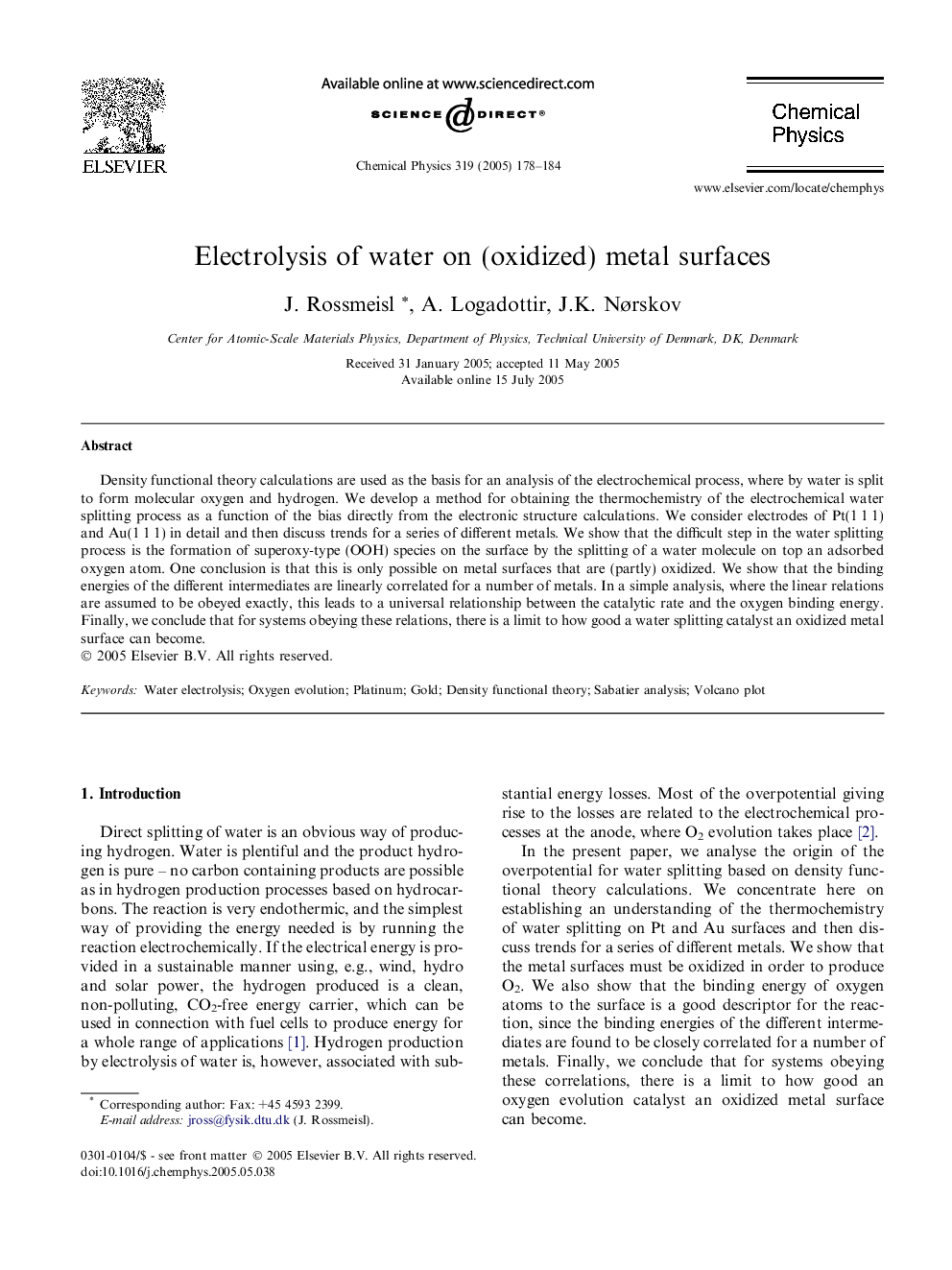| Article ID | Journal | Published Year | Pages | File Type |
|---|---|---|---|---|
| 9575147 | Chemical Physics | 2005 | 7 Pages |
Abstract
Density functional theory calculations are used as the basis for an analysis of the electrochemical process, where by water is split to form molecular oxygen and hydrogen. We develop a method for obtaining the thermochemistry of the electrochemical water splitting process as a function of the bias directly from the electronic structure calculations. We consider electrodes of Pt(1Â 1Â 1) and Au(1Â 1Â 1) in detail and then discuss trends for a series of different metals. We show that the difficult step in the water splitting process is the formation of superoxy-type (OOH) species on the surface by the splitting of a water molecule on top an adsorbed oxygen atom. One conclusion is that this is only possible on metal surfaces that are (partly) oxidized. We show that the binding energies of the different intermediates are linearly correlated for a number of metals. In a simple analysis, where the linear relations are assumed to be obeyed exactly, this leads to a universal relationship between the catalytic rate and the oxygen binding energy. Finally, we conclude that for systems obeying these relations, there is a limit to how good a water splitting catalyst an oxidized metal surface can become.
Related Topics
Physical Sciences and Engineering
Chemistry
Physical and Theoretical Chemistry
Authors
J. Rossmeisl, A. Logadottir, J.K. Nørskov,
